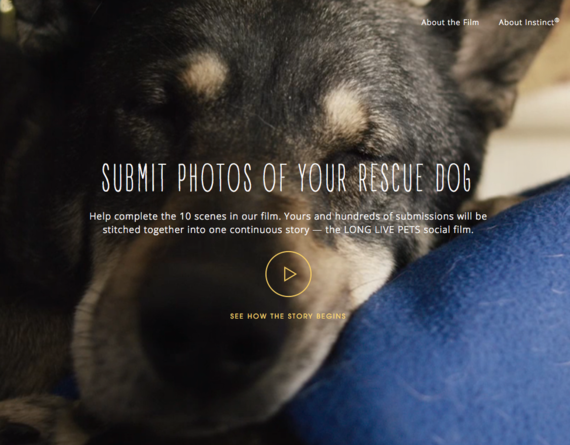Believe it or not, cultural movements are being used to woo and win a new generation of consumers to pet food brands. People long to be part of something bigger than them. As such, pet food brands touting fresh perspective and a fragrant brand purpose are becoming movements. And these movements ultimately serve to benefit equity and drive share harder, both for a few established brands but moreover for upstarts and challenger brands.
The pet food brands that instigate movements align with and generate more passionate advocates especially among millennial and Gen Z consumers who are on the look out for brands willing to try and change society or culture. As food culture changes for humans, so, too, does it change for our best friends. There is a lot of emotion surrounding the ones we love, and that naturally extends to our cats and dogs. The questions some marketers are asking is how do we use disruptive innovation in marketing to tap into these passions in new ways.
To the owners of these movement brands, the business value of mass engagement by the culture includes earned media (on top of paid media) and greater penetration, conversion and loyalty through word of mouth. Net, they help build share. If you are the established brand, this is the competitive edge. If you're an upstart, this is the secret to an accelerated trajectory in the market.
New challenger brands are creating perceived momentum in an area of our lives where we thought we already had plenty of good choices. Think back to the days when brands like Nestle Purina, and Beneful as well as Iams, Cesar, Royal Canin and Peidgree brands (owned by Mars Petcare) were in the cupboard. Back then, we thought we had loads of choice. Then we went to the vet and saw Science Diet (owned by Colgate-Palmolive) and Eukanuba (another Mars brand) behind the white-frocked person behind the counter. These were all good household names. My family had several pets and we fed them these brands.
Fast forward to 2015. Now there is Blue Buffalo Pet Food, Nature's Variety Instinct, Addiction and several others. These are the challenger brands. They take nothing for granted. They enter the pet store near you with lots of gumption and new marketing ideas that challenge the traditional pattern of pet food advertising. They smash through the clichés of pet food advertising, namely:
-the shiny-coated pet TV commercial
-the dog-lover speaking to camera about how wonderful the food is commercial
-the pet running towards the master for a hug in glowing sunlight commercial.
-who can forget the tried and true dog running through the grass shot, blazing its way to the food bowl
-And the pièce de résistance, of course, is the lick shot on the child's grinning face commercial.
All these clichés are perhaps one of the reasons why the newcomers are gaining ground for their brands, in addition to the new formulations and product attributes.
Much like Chipotle is doing in the fast food business, these new brands are challenging the marketing status quo in pet food and gaining a lot of passionate advocates in the process -- people who are very vocal on social media.
"I think one of the main tasks for the innovator is often the communication. Since you're creating a product that meets a new need, there's work involved in explaining exactly what you've created and how it's better than what people are in the habit of using," says Lucy Postins, founder of the human-grade whole-food pet food company.
What some pet food marketers do has changed almost beyond recognition; the tactics used to drive brand awareness, interest and loyalty are completely different from the marketing mix of just a few years ago. The challenger brands are forced to be more innovative. But interestingly, the marketing of traditional brands has not changed much since the discipline of brand management was first developed over fifty years ago.
With less market share, and more modest budgets, the challenger brands by nature have to do more with less, and many of them have on the whole devised approaches that will best prepare their brands to effectively connect and interact with pet owners to drive business growth.
Case is point is a new campaign by Nature Variety's Instinct called Long Live Pets, that's making a lot of waves. It's a social movement to fight for rescue dogs across America. By aligning with such a large and passionate group of pet-owners, Instinct touches a nerve with a lot of people. You upload a photo of your rescue pet, which will be turned into a series of films that will run nationally (full disclosure we worked on this brand).
Likewise, Blue Buffalo has pervasive advertising that is deliberately "in-your-face." It encourages "pet parents" to compare the Buff to the competition, the founder of the company told Bloomberg. Blue Buffalo's television spots and Internet videos have become so familiar they've been parodied on Saturday Night Live. The mock commercial for "Blue River" dog food aired on NBC. Guest host Seth Rogen and SNL cast member Cecily Strong played the sort of overwrought consumers who philosophize about pet nutrition in Blue Buffalo's actual ads. The characters suffer an emotional meltdown as they discuss what they've fed their bug-eyed pug mix, Peanut.
I have a set of friends who are so suspicious of pet food that they only serve their dog food what they cook for the family and eat. Unabashedly, the dog has a comfortable place at the table.
Against these challengers the big pet food brands are fighting back. In a very public campaign in 2014, Nestle Purina took Blue Buffalo to task, saying the upstart brand is falsely claiming its products contain no animal byproducts or grain. This campaign was backed by an unusually sophisticated communications effort that included its own website, petfoodhonesty.com according to Ad Age.
As a consumer overwhelmed by the profusion of brands, it's increasingly more confusing and difficult to know what's right for your little Balthazar or Zorro. In the past we relied on our gut. We relied on what our parents fed our family pets. We relied on the vet. But now as new brands knock on our door and push us to compare and think about this more than we have in the past, we relying increasingly on communications and marketing and the internet for information so we can learn about pet food and which brand is right for our pet.

